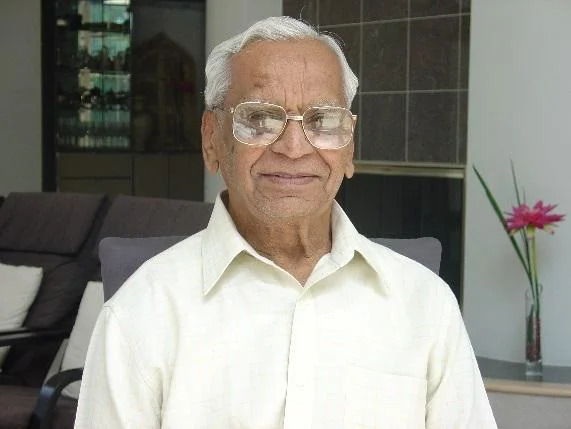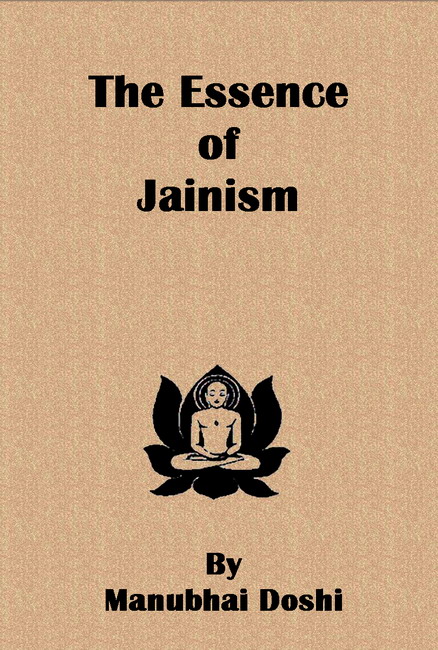It could have been seen from our discussion so far that termination of any Karma is Nirjara. We have mentioned two types of Nirjara, viz. Akaam Nirjara and Sakaam Nirjara. Operative Karmas fall off or terminate after extending appropriate consequences to the soul. This type of termination is automatic. Soul has not to make any effort for such termination. That is called Akaam Nirjara which means getting to the end of some Karma without any deliberate effort or intention of terminating it. All the worldly souls have been undergoing this type of Nirjara since time without beginning. While bearing the consequences of the operative Karma, soul however, generally indulges in sense of craving or aversion for the given situation. As such, it acquires new Karmas while achieving Nirjara of the operative Karmas. Akaam Nirjara therefore does not help soul in getting rid of the bondage of Karmas. In case of Sakaam Nirjara, soul is desirous of getting freed of Karmas. It therefore stays equanimous and does not indulge in craving or aversion while bearing the consequences of operative Karmas. As such it does not acquire new Karmas while undergoing Sakaam Nirjara. The bondage of Karma is thus getting reduced by that type of Nirjara. Our present discussion is therefore concerned with Sakaam Nirjara only.
We have seen in the last chapter that different types of Tapa, if properly performed, can serve as excellent means for achieving Nirjara. In this chapter, we want to discuss other aspects for achieving it. Aside from bondage arising from soul’s embodiment, principal factors responsible for causing bondage of Karma, are wrong perception, lust of sensuous pleasures, defilements and indolence. On the other hand, right perception, restraint, detachment and diligence are the factors that counter those causes and are therefore means for achieving Nirjara. Wrong perception arises on account of ignorance of soul about itself. Consciousness, that manifests itself in the form of capability of knowing, is the essential attribute of soul. That attribute does not belong to lifeless objects. Our body by itself is lifeless. Its peculiar mechanism is however helpful to the intangible soul for manifesting itself. Soul thus abides in a body that is destined for it by its operative Karmas and that body thereby displays the quality of consciousness as long as soul so abides. We therefore treat that body as alive. As soon as soul departs from it, the body loses the consciousness and is treated as dead. It is then destined to disintegrate and we cremate the body for its quicker disintegration. Bodies of our most beloved ones are not exception to this.
All of us have witnessed this difference between life and death and know for sure that connection of body with soul does not last forever. We are however prone to vaguely imagine that death would somehow not overtake us and lead the life as if we are not going to die. There is an interesting anecdote in this connection in Mahabharat. During the period Pandavas were in exile, once Udhishthira got thirsty and asked Nakul to look for water. Nakul spotted a lake a little away. As he approached the water, he heard a voice warning him not to take water before answering some questions. Ignoring the warning, Nakul tried to get water and was instantaneously dead. As he did not return, Udhishthira sent Sahdev after him. He came to the same place. He too tried to get water ignoring the voice and was dead. Thereafter Arjun and Bhima followed them in succession and met the same fate. Then Udhishthira went there. He was wise enough not to ignore the voice. He therefore expressed his willingness to answer the questions. One important question was ‘What is the biggest amazement of the world’. Udhishthira replied that death is a certainty for every being. People however behave as if they are not going to die and that type of behavior is the most amazing aspect of the worldly life. The invisible deity was pleased with his replies and restored all his brothers to life.
Many of us might have heard or read this story or something similar to that. Hardly anyone however cares for this aspect in daily life. There is no intention here to deny association of soul with body as long as one is alive. Soul being an intangible object has to manifest itself through some body. As such it experiences the feeling of happiness and/or unhappiness depending upon the conditioning of that body. No situation however continues for ever. The feelings of happiness or unhappiness are thus ephemeral and therefore unreal. One should stay aware of this ephemeral nature of every situation and of all the connections inclusive of the connection of soul with body. That awareness can help us in performing our duties in this life properly and adequately without developing undue attachment for any situation. However our identification with the body and everything else, which we think as belonging to us, happens to be so complete that we can hardly remember that all these connections are ephemeral and we have to leave them one day.
The religious books compare this connection of soul with body to that of milk with water. These are two separate, distinct ingredients having different properties. When mixed together, they look as one single substance and cannot be easily separated. Similarly soul happens to identify itself with the body through which it manifests and stays oblivious of its own real nature. Soul is conscious, formless, everlasting and blissful; the body by itself is lifeless, concrete, ephemeral and devoid of feelings. These two cannot stay connected for ever and can never be totally identified. Any feeling of such identification is therefore false.
This false identification has however been continuing from embodiment to embodiment and constitutes the basic ignorance of soul that leads it to delusion about itself. This delusion causes the wrong perception leading the conscious entity to believe that ‘I am the body and my happiness consists of the comforts and well-being of the body’. All the activities of worldly souls therefore stay tuned to pursuits of material happiness and physical comforts. This wrong perception has to be erased by attaining the right perception which is also known as Samyagdarshan. The right perception enables us to distinguish right from the wrong and leads us to the path of true well-being. Thus right perception or Samyagdarshan is the basic means for achieving Nirjara.
Another factor responsible for acquiring bondage of Karma is lust for sensuous pleasure. It can also be expressed as absence of restraint. It has however been observed that once a person gains right perception, his approach to life undergoes radical change. He is no longer inclined to lead unrestrained life. His new perception would not allow him to do so. Slowly and steadily, restraint would become a part of his nature and he can afford to take vow for observing the same. This is known as Vrata. There are five main Vratas that have been laid down for the aspirants. For persons who have renounced the worldly life, they are to be observed to the fullest extent and are therefore called Mahavratas. For laymen it is not practicable to observe them to that ex tent. They are therefore supposed to observe them in modified forms that are known as Anuvratas. Of all these Anuvratas observance of non-violence is the supreme Vrata. In a way it is the essence of Jainism. Other Vratas lie inherent in observance of non- violence. In order to make the observance of these Anuvratas more effective, seven more Vratas have been laid down as supplementary restraints. Three of them are known as Gunavratas and four others have been laid down as disciplinary restraints which are known as Shikshavratas. Following is the list of these 12 Vratas.
- Observing nonviolence to utmost possible extent
- Practicing truthfulness and avoiding major lies
- Avoiding theft, burglary, smuggling, cheating etc.
- Staying contented with married spouse
- Laying down limits on possessions
- Restricting the areas of operations
- Restrictions on consumption and avoiding avocations involving too much violence.
- Avoiding purposeless activities
- Practicing Samayik for gaining equanimity
- Restricting activities within a limited area.
- Observing Paushadh or practicing life of a monk
- Serving the monks and worthy entities and helping the persons in need
With right perception, the aspirant also begins to realize that the favorable or unfavorable situations in life are obtained as a result of the past Karmas. He therefore tries to avoid reacting to any given situation with craving or aversion. Thereby he gains increasing degree of equanimity and tries to remain unperturbed even in adverse circumstances. That way he starts overcoming defilements.
He also makes out that the life span being limited, he cannot afford to waste any time and should diligently pursue his objective of Self-realization. He tries to remain alert to an increasing extent and overcomes all types of indolence. Thus restraint, equanimity and alertness are more or less like corollaries of right perception and invariably follow it, if the person does not lose that perception. Right perception can therefore be called the panacea for gaining Nirjara.
 Manubhai Doshi
Manubhai Doshi
